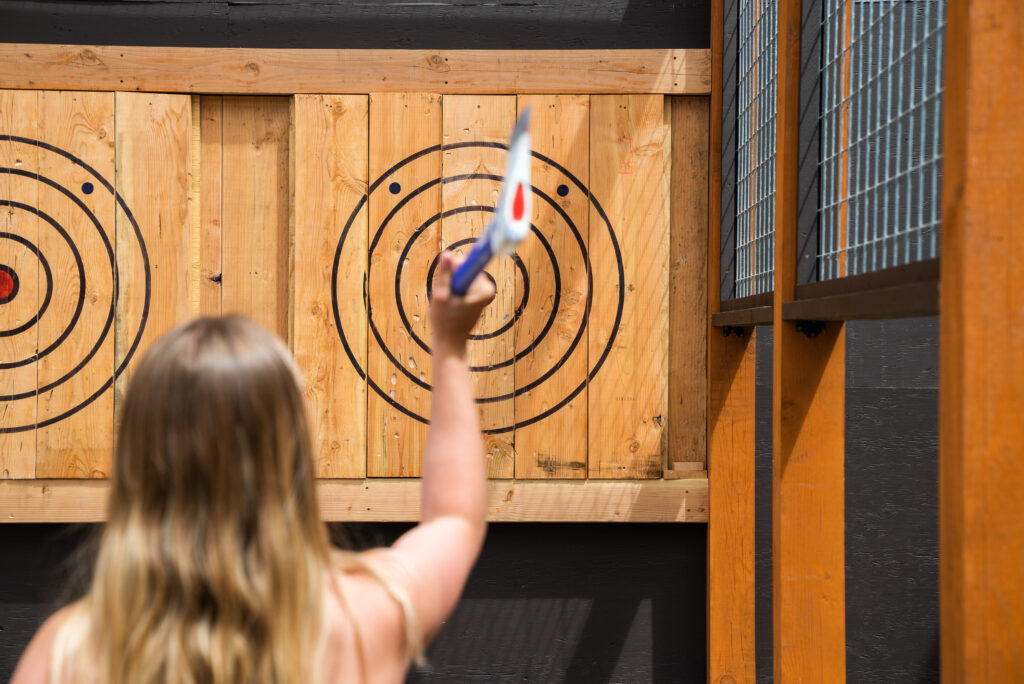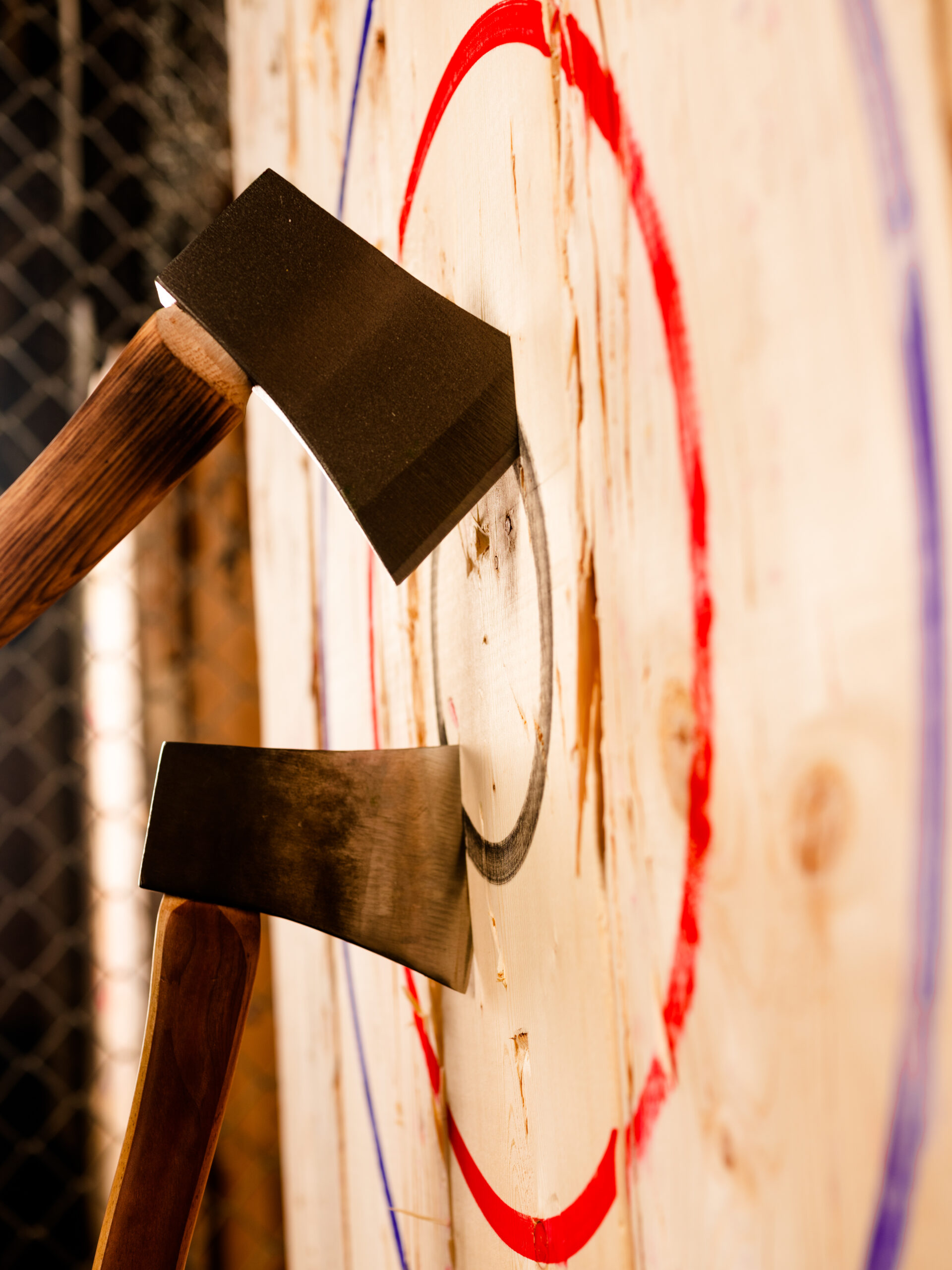Make Memories at Denver Axe Throwing: Tips for an Enjoyable Outing
Make Memories at Denver Axe Throwing: Tips for an Enjoyable Outing
Blog Article
The Fun of Axe Throwing: Exactly How This Sporting Activity Integrates Ability and Adrenaline for a Good Time
Axe throwing has emerged as a mesmerizing sport that masterfully intertwines the requirement for precise skill with the thrill of adrenaline, offering individuals a distinct and interesting experience. The act of hurling an axe in the direction of a target requires focus and method, at the same time fostering an ambience of camaraderie and pleasant competition. This fascinating mix of mental focus and physical exertion has actually made axe throwing a popular selection for those seeking both entertainment and a feeling of success. To absolutely appreciate the depth and appeal of this task, one should consider its beginnings, the essential equipment, and the fundamental strategies that ensure both security and satisfaction.
The Origins of Axe Throwing
Axe throwing, an entertainment activity that has gained considerable appeal in recent years, traces its roots back to ancient times. The earliest documents of axe usage in affordable contexts are found among the Celts and Vikings, who threw axes for sporting activity as well as in battle training.
Middle ages European warriors, specifically during the Center Ages, exercised axe tossing as component of their martial training. The Francisca, a sort of throwing axe used by the Franks, came to be famous for its dangerous precision. This traditional weapon was created to be thrown at adversary guards and armor, showcasing its dual utility in both sport and fight.
In even more recent background, axe throwing saw a rebirth in the logging camps of North America in the 20th and 19th centuries. Lumberjacks would certainly involve in friendly competition, testing their precision and stamina by targeting at wooden targets. This evolution from a survival skill to a recreational task has led the way for its modern resurgence, with specialized places and organizations now commemorating the sport globally.
Tools You Required
Recognizing the abundant background of axe throwing enhances the appreciation of the sport's modern model. Central to this thrilling task is the devices, which is important for both safety and security and efficiency. The key tool is, certainly, the axe. For competitive and recreational axe tossing, the most frequently used kind is the hatchet, generally evaluating between 1.25 to 2 extra pounds with a take care of length of about 16 inches. The axe should have a sharp, well-maintained blade and a deal with made from long lasting wood or composite material, making sure a good grip and balance.
Equally essential is the target. Regulation targets are constructed from wood, with softwood ranges like yearn or cottonwood being favored for their ability to hold the axe and take in. The target is typically divided right into 5 concentric circles, each with a particular point value, to promote rating.
Safety and security gear, however frequently forgotten, is vital. Safety handwear covers can enhance grasp and stop blisters, while closed-toed footwear are a must to protect feet from gone find more information down axes (denver axe throwing). Lastly, a well-lit, roomy throwing area, total with safety and security obstacles, makes certain a controlled atmosphere where participants can focus on honing their abilities.
Fundamental Techniques Explained
Grasping the fundamental methods of axe throwing is crucial for both safety and proficiency. The leading reference hand should be placed straight listed below the axe head, while the non-dominant hand sustains the end of the take care of.
Following, concentrate on the position. Stand with your feet shoulder-width apart, guaranteeing your body is stabilized. Your leading foot should be somewhat onward, aligning with your target. This positioning help in keeping security and guiding power precisely towards the target.

Safety First
Making sure safety in axe throwing is paramount to creating an injury-free and satisfying experience. Safety gauges begin with the location design. A well-designed axe throwing center functions clear separations in between throwing lanes, strong backdrops to capture stray axes, and non-slip floor covering to stop crashes. Additionally, ample lights is critical to assist participants keep aesthetic accuracy and spatial awareness.
Benefits of Axe Throwing
Axe tossing deals a myriad of benefits that prolong beyond simple leisure. The repetitive movement of throwing the axe also boosts hand-eye control and fine motor skills.
Mentally, axe tossing needs emphasis, technique, and precision, making it an outstanding method to develop cognitive skills. The concentration required to hit the target can work as a form of mindfulness, permitting participants to remove their minds and lower anxiety. This psychological interaction can be particularly valuable in helping people develop far better analytical skills and mental strength.
Socially, axe throwing is often enjoyed in team setups, cultivating team-building and friendship. Whether as component of a corporate event or a casual outing with friends, the sport urges communication and collaboration. In addition, the communal experience of finding out and enhancing together can strengthen connections and develop lasting memories.
Final Thought

The earliest records of axe usage in competitive contexts are discovered among the Celts and Vikings, who tossed axes for sporting activity as well as in combat training. Launch the axe when your hands are approximately at eye degree, permitting the axe's natural turning to lead it in the direction of the target.
A well-designed axe tossing center attributes clear separations between tossing lanes, strong backgrounds to catch stray axes, and non-slip flooring to stop mishaps. Participants should be instructed on the correct method to throw the axe and take care of, emphasizing controlled, purposeful movements over forceful tosses.
In recap, axe tossing stands out as a sporting activity that masterfully incorporates accuracy, adrenaline, and ability.
Report this page